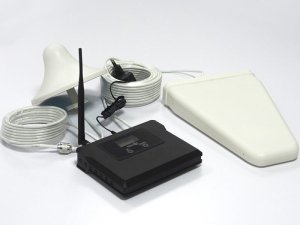If you have decided to buy a signal booster for improving your mobile connection, we recommend reading this text attentively in order to get a better understanding of all the parameters that you should pay attention to when you want to compare different models. Actually, the first thing that should be taken into account is a producer or a seller of a device. Please, make sure that you can fully rely on this company, that all the offered devices are certified and that that they are fully safe for your health. But in this article, we want to focus more on the technical aspect and, consequently, on the technical characteristics that make all boosters different.
Frequency bands
Though on many websites you can find a search filter in accordance with mobile operators that this or that booster is compatible with, actually this filter is introduced only for users’ convenience. Boosters are designed to be compatible not with some operators but with some particular frequency bands.

Usually, numerous operators share the same frequency bands which means that if you buy a booster for yourself, when your friends who use the services of other operators will come to visit you, they will have the possibility to enjoy the improved signal.
Different bands are used for transmitting different types of mobile signal and, as a result, this parameter shows what signals can be improved by this or that model. For example, if we take the European region, we will see that the majority of operators use the 900 MHz, 1800 MHz and 2100 MHz frequency bands. And namely they are used for sending GSM (900 MHz and 1800 MHz), 3G (2100MHz) and 4G/LTE (1800 MHz) signals. But be attentive! The frequencies of your mobile operator can differ from those that we’ve mentioned.
Downlink and uplink power
If you read technical descriptions of signal boosters, you will see such characteristics as downlink and uplink power.

But not so many customers analyze these figures. And actually, they are not so wrong. These parameters really matter only in a couple of situations. For example, the maximum downlink is crucial only in those cases when the outdoor signal is strong. However, if you install a booster, it usually means that the signal is low (except for the cases when your building has a metal roof or the building is very large and, as a result, the outdoor signal is strong while the indoor signal is very low).
Maximum uplink is important in those situations when you buy a booster for a vehicle. When you are at a border of a zone of mobile signal coverage, as a rule, the uplink connection has a primary role. And a smartphone is not able to send as much power as any cell tower can. High uplink power ensures a better signal even when you are very far away from the nearest cell tower.
In other words, if you are looking for a home booster that will be installed in an area with a low outdoor signal, these parameters do not have any special importance.
Gain
There is another parameter that can be rather unclear for those who have no tech background. That’s gain. This measure shows in dB how much a signal can be amplified by a booster.
Actually, this parameter determines the coverage area of the device.
Coverage area
Today you can find boosters for buildings (and vehicles) of practically any type and size. There are boosters that can be suitable for small flats and offices, their coverage can be around 100 m². At the same time, there are boosters with several additional indoor antennas that can cover with the improved signal the areas of up to 3000 m² and even more.

We can’t say that some boosters are better than other models from this perspective. However, you should know for what building you are buying a booster. If you buy a booster that won’t have enough power to send a signal within the entire inside area, it will turn out so that some rooms will still be dead zones with no signal. But at the same time, it is not good to buy a booster with the largest coverage area for a small house or flat as boosters with larger coverage are more expensive. And we do not think that you want to overpay for some booster capacities that you simply do not need.
So, yes, as you see, boosters can be different. But if you are considering boosters offered on our website, there is one thing that unites them all – their quality. We offer only high-quality and absolutely reliable boosters that can cope with different types of signal problems.
It is impossible to name the best booster of all but it is possible to find the best booster for your case.
Below you can find our Top 10 of the best mobile signal boosters. Maybe one of them will be suitable for you? Have a look at them and do not hesitate to contact us if you have any questions.
 + FREE
+ FREELightning Surge Protector
4.9/5 — 278 Reviews
Product Description »
Specification »
Reviews »
learn more »
 + FREE
+ FREELightning Surge Protector
4.9/5 — 76 Reviews
Product Description »
Specification »
Reviews »
learn more »
 + FREE
+ FREELightning Surge Protector
5/5 — 32 Reviews
Product Description »
Specification »
Reviews »
learn more »

4.7/5 — 59 Reviews
Product Description »
Specification »
Reviews »
learn more »
 + FREE
+ FREELightning Surge Protector
4.9/5 — 243 Reviews
Product Description »
Specification »
Reviews »
learn more »
 + FREE
+ FREELightning Surge Protector
4.9/5 — 106 Reviews
Product Description »
Specification »
Reviews »
learn more »

4.9/5 — 135 Reviews
Product Description »
Specification »
Reviews »
learn more »

4.9/5 — 184 Reviews
Product Description »
Specification »
Reviews »
learn more »

4.9/5 — 96 Reviews
Product Description »
Specification »
Reviews »
learn more »

4.9/5 — 17 Reviews
Product Description »
Specification »
Reviews »
learn more »







